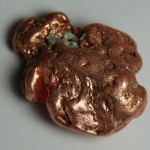What comes to mind as you consider the natural resources of the world?
Natural resources are those that occur in an environment in their natural form, unchanged by human tinkering and industry. Air and water are certainly the top two that are key for human survival. Other biggies—coal, gas and oil—are now mega industries in our developed world.
Here are four interesting natural resources from around the world and the locations from which they are produced and harvested.
(1) COPPER is a highly important industrial metal—and, it’s also a nutrient for the human diet! The properties of copper make it malleable, thermally and electrically conductive, and resistant to corrosion. Furthermore, it’s antimicrobial, meaning it can help to prevent infection, according to a facts report released by Copper Development Association Inc.
The global production of Copper bumped up by 200K tons, to a total of 18.7 million metric tons in 2015, according to the most recent report from the US Geological Survey (USGS).
Chile is still the top producer of the red metal, even with a 50K-ton decline from 2014 to 2015. This drop could be attributed to earthquakes, erratic rainfall, strikes, as well as a decrease in demand from the top consumer, China. Regardless, Chile’s mine production leads by a long shot, producing 5.7 million metric tons.
General Kinematics’ VIBRA-DRUM® Grinding Mill is utilized in copper processing facilities to free the copper plated onto the iron media into flakes. Suspended in ARD water and discharged from the drum, the copper is then recovered by filtration following the drum. Iron media is added on a regular interval to sustain the chemical reaction and recovery of the copper. This process occurs continuously, and has resulted in upwards of a 90% copper recovery rate.
(2) LIMESTONE is heated up, combined with salt, and used to create a load of everyday goods: paper, glass, paint, soap, detergents, textiles, baking powder, and even pharmaceuticals. Limestone is also crushed up and used for cement, steel-making, and road construction, according to GLEAM (Great Lakes Environmental Assessment and Mapping Project).
Located in the Great Lakes along the shore of Lake Huron: the Calcite Quarry is the world’s largest limestone mine, near Rogers City, MI. The GK UN-COALER® Activator/Feeder combines the performance of vibratory feeding with the benefit of integrated flow control ideal for metering limestone.
(3) PHOSPHORUS is a central ingredient in the production of nitrogen-phosphorus-potassium fertilizers, which is used on food crops all over the globe, all according to the USGS. The only significant source of phosphorus is phosphate rock minerals—and there is no substitute for phosphorus in agriculture.
Production is highest in China at 100 million metric tons, followed by Morocco and Western Sahara with 30 million metric tons, and 27.6 million metric tons in the U.S. The world’s consumption of fertilizers and industrial uses of phosphorous is projected to continually grow from 43.7 million tons in 2015 to 48.2 million tons by 2019 according to the most recent USGS phosphorous report. GK’s VIBRA-DRUM® Grinding Mill is ideal in for this application as well recover these minerals more effectively.
(4) LITHIUM batteries power most rechargeable cell phones and laptop computers. Aside from batteries, the mineral is used to create a smattering of other materials including ceramics, glass, grease, and has various other industrial applications.
The world’s consumption of lithium goods all increased in 2013—though lithium consumption for primary aluminum production decreased—by an estimated 4- to 6-percent from the year prior: an equivalent of 30K metric tons. China was estimated to be the leading consumer, as of 2012, all according to the United States Geological Survey: Lithium 2013. And the General Kinematics’ VIBRA-DRUM® Grinding Mill has been utilized in these processing facilities to break down and pulverize efficiently.
Historically, Lithium has been mined from continental brines and hard rock minerals. The world’s leading product of lithium carbonate is Chile, which is home to two brine operations on the Salar de Atacama in the Andes Mountains.
GK Equipment
While the earth offers an abundance of natural resources, it is key to recycle these precious materials to the best of our abilities. Fortunately, the equipment created by General Kinematics can help to mine and recycle natural resources and post-market materials.








